Twelve distinctive hawk species soar in Colorado’s expansive skies, each contributing to the state’s avian diversity.
From the iconic Red-tailed Hawk to the elusive Ferruginous Hawk, these raptors paint the heavens with their unique characteristics and behaviors.
This exploration delves into the lives of these twelve hawks, unraveling their sizes, feeding preferences, nesting habits, and roles within Colorado’s ecosystems.
As we embark on this avian journey, we’ll uncover the intricacies of their existence, understanding the vital interplay between these majestic birds and the diverse landscapes they call home.
Join us in discovering the remarkable world of the twelve hawks that grace the skies above Colorado, each with its own story and significance in the state’s vibrant natural tapestry. Stay focused.
12 Hawks in Colorado
Discover the diverse hawks inhabiting Colorado’s skies. Each species thrives in unique ecosystems, from the iconic Red-tailed Hawk to the elusive Ferruginous Hawk.
Delve into their sizes, feeding habits, and nesting behaviors, unveiling these raptors’ fascinating lives soaring through the Centennial State’s picturesque landscapes.
1. Red-tailed Hawk
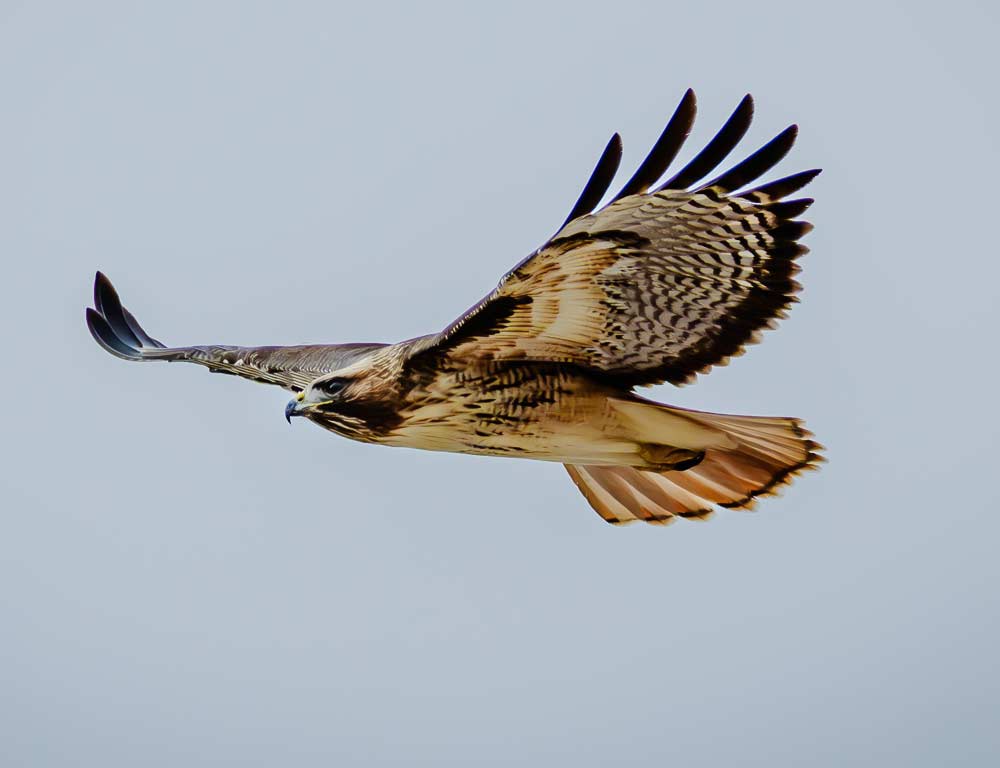
- Scientific name: Buteo jamaicensis
- Size: 18-26 inches
- Weight: 2.5-4.5 pounds
- Food: Carnivorous (small mammals, birds, reptiles)
- Population: Common and widespread
- Life span: 10-25 years
- Wingspan: 3.3-4.8 feet
The Red-tailed Hawk is a prominent raptor in Colorado, easily identified by its red tail and keen eyesight. These birds are adaptable and can be found in various habitats, from open fields to forests.
Red-tailed Hawks are skilled hunters, employing a sit-and-wait strategy or soaring high in the sky before diving to catch prey with their strong talons.
Their varied diet allows them to thrive in diverse environments, contributing to their widespread population.
2. Rough-legged Hawk
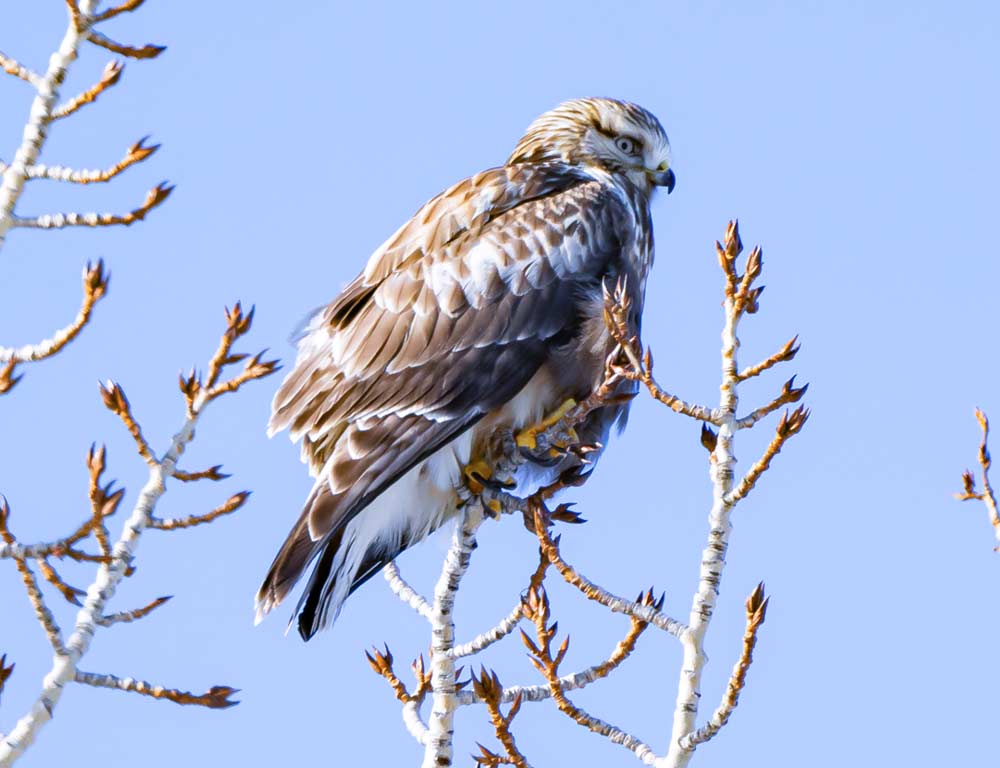
- Scientific name: Buteo lagopus
- Size: 18-24 inches
- Weight: 2-3.5 pounds
- Food: Mainly rodents, small mammals
- Population: Migratory, seen in winter
- Life span: 10-17 years
- Wingspan: 4.5-5.5 feet
The Rough-legged Hawk is a winter visitor to Colorado, nesting in the Arctic tundra and migrating south during the colder months. Identified by its feathered legs, these hawks are adapted to colder climates.
Their lifestyle revolves around pursuing rodents in open areas and showcasing impressive hovering skills while hunting. Their migration patterns contribute to the population dynamics in the region.
3. Swainson’s Hawk
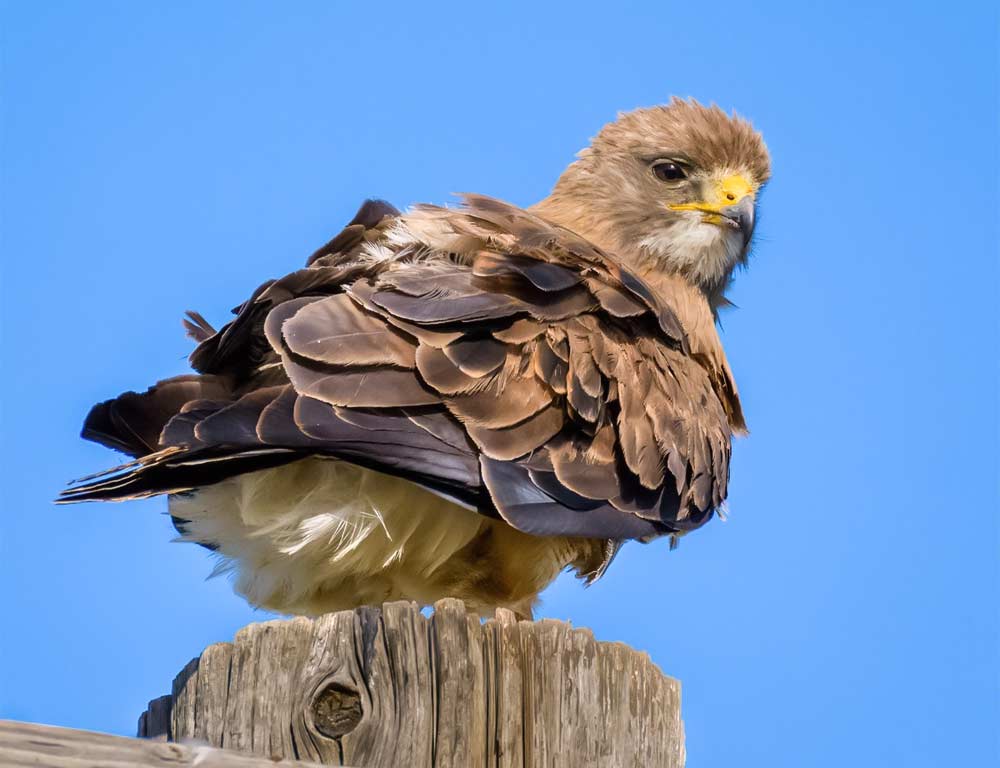
- Scientific name: Buteo swainsoni
- Size: 18-22 inches
- Weight: 2-3 pounds
- Food: Insects, small mammals, reptiles
- Population: Common during breeding season
- Life span: 7-14 years
- Wingspan: 4.5-4.9 feet
Swainson’s Hawk is a migratory bird, spending its breeding season in Colorado before flying to South America for winter. Often seen in open grasslands, these hawks exhibit a distinctive hovering behavior while hunting for insects.
They are social birds nesting in colonies. Their diet, mainly comprising insects during the breeding season, makes them beneficial for pest control.
The conservation of suitable nesting habitats is crucial for maintaining their populations during the breeding season in Colorado.
4. Cooper’s Hawk
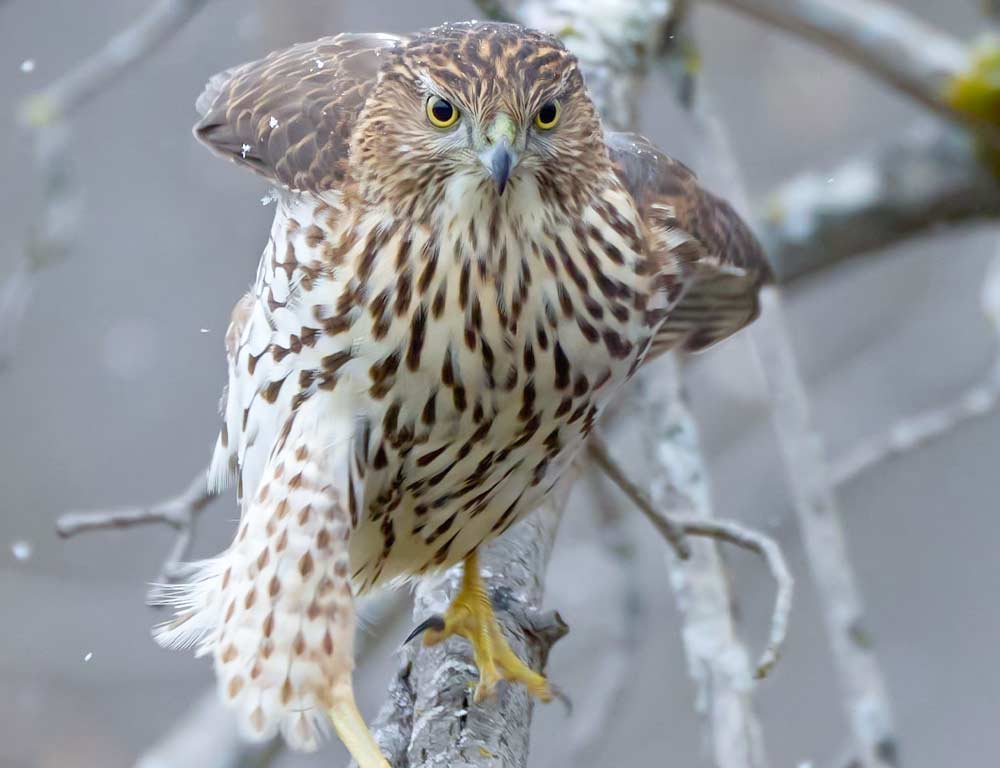
- Scientific name: Accipiter cooperii
- Size: 14-20 inches
- Weight: 8-24 ounces
- Food: Birds, small mammals
- Population: Common in wooded areas
- Life span: 7 years (average)
- Wingspan: 24-35 inches
Cooper’s Hawks are commonly found in wooded areas, often near human habitats. Their compact size and agility make them adept at navigating through dense vegetation.
These hawks build stick nests high in trees, usually near the trunk. The nests are constructed cooperatively by both the male and female.
Cooper’s Hawks primarily prey on birds, relying on surprise attacks and their quick flight to catch their prey. Their population is stable in suitable habitats, and their nests are crucial for breeding success.
5. Sharp-shinned Hawk
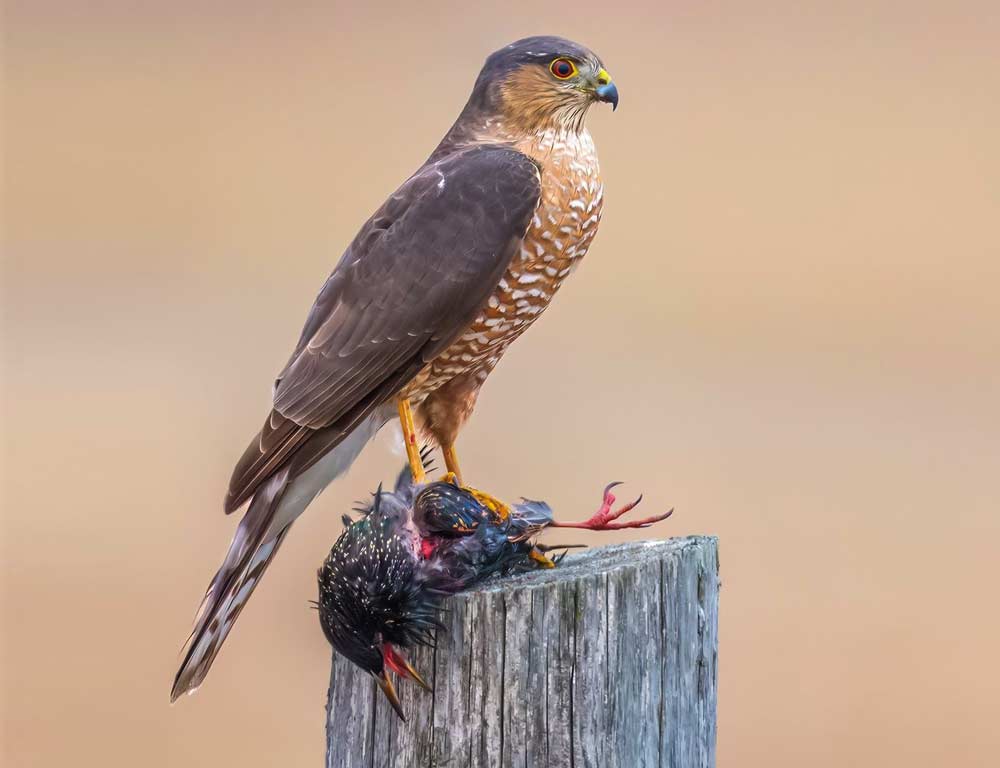
- Scientific name: Accipiter striatus
- Size: 9-13 inches
- Weight: 3-7 ounces
- Food: Birds, small mammals
- Population: Common in woodlands
- Life span: 4 years (average)
- Wingspan: 16-22 inches
Similar in appearance to the Cooper’s Hawk but smaller, the Sharp-shinned Hawk is often found in woodlands.
They build stick nests high in trees, utilizing natural crotches for support. These hawks are agile flyers, easily navigating through dense forests.
Sharp-shinned Hawks primarily prey on smaller birds, ambushing them from concealed perches. Their nests are integral to their reproductive success, providing a secure location for raising their young.
6. Ferruginous Hawk
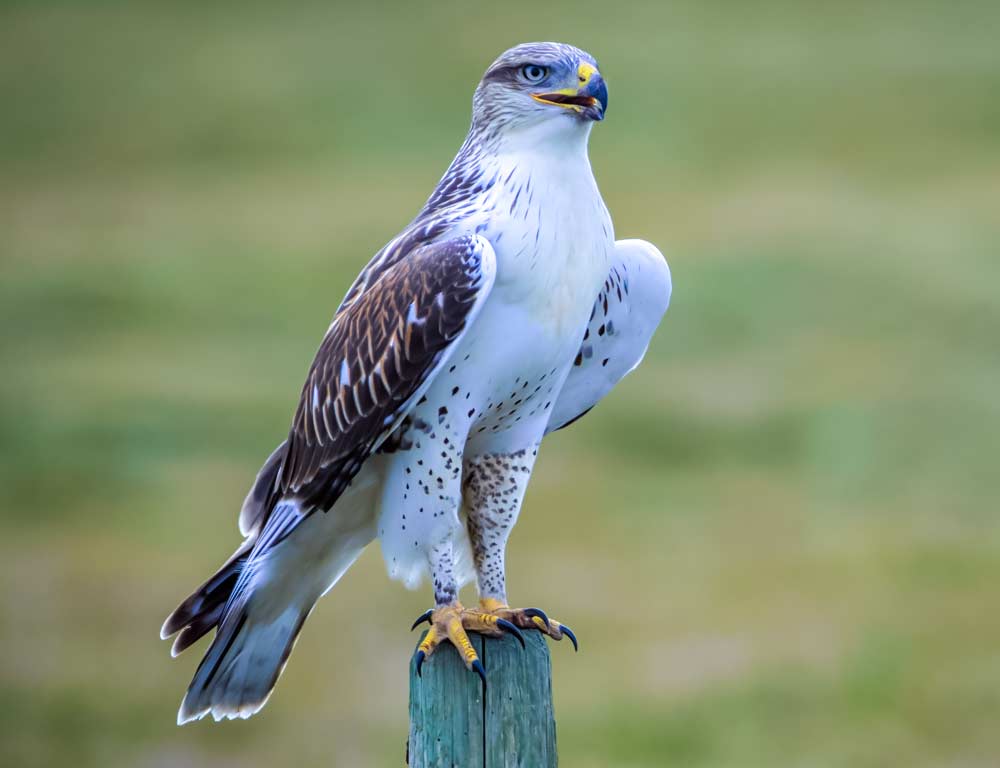
- Scientific name: Buteo regalis
- Size: 22-29 inches
- Weight: 2.4-5.5 pounds
- Food: Small mammals, ground squirrels, rabbits
- Population: Declining, especially in some areas
- Life span: 8-10 years
- Wingspan: 52-56 inches
The Ferruginous Hawk is North America’s largest hawk and adapted to open habitats. Their nests are constructed on cliffs or artificial structures like power poles.
Ferruginous Hawks have a diet predominantly consisting of small mammals, and their large size and powerful talons make them efficient hunters.
Unfortunately, their population faces challenges, particularly in some areas, due to habitat loss and other threats. Conservation efforts are essential for the preservation of this species and the protection of their nesting sites.
7. Northern Goshawk
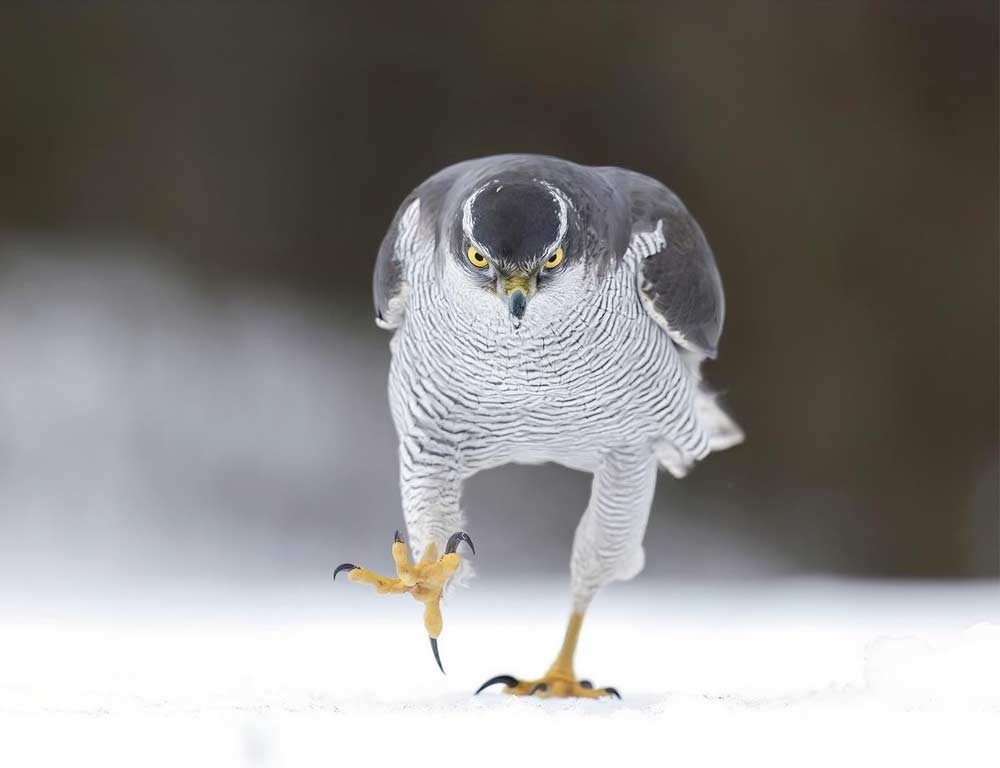
- Scientific name: Accipiter gentilis
- Size: 20-27 inches
- Weight: 1.5-3.5 pounds
- Food: Birds, mammals, sometimes reptiles
- Population: Generally stable
- Life span: 5-10 years
- Wingspan: 40-46 inches
The Northern Goshawk is a large and powerful hawk found in various forested habitats, including coniferous and mixed forests. They build stick nests high in trees, and the female is the primary nest builder.
Northern Goshawks are agile flyers and skilled hunters, preying on various birds and mammals.
Their population is generally stable, but like many raptors, they can be sensitive to habitat disturbances. Conservation efforts often focus on preserving mature forests, which are crucial for their nesting success.
8. Variable Hawk (also known as Red-tailed Hawk)
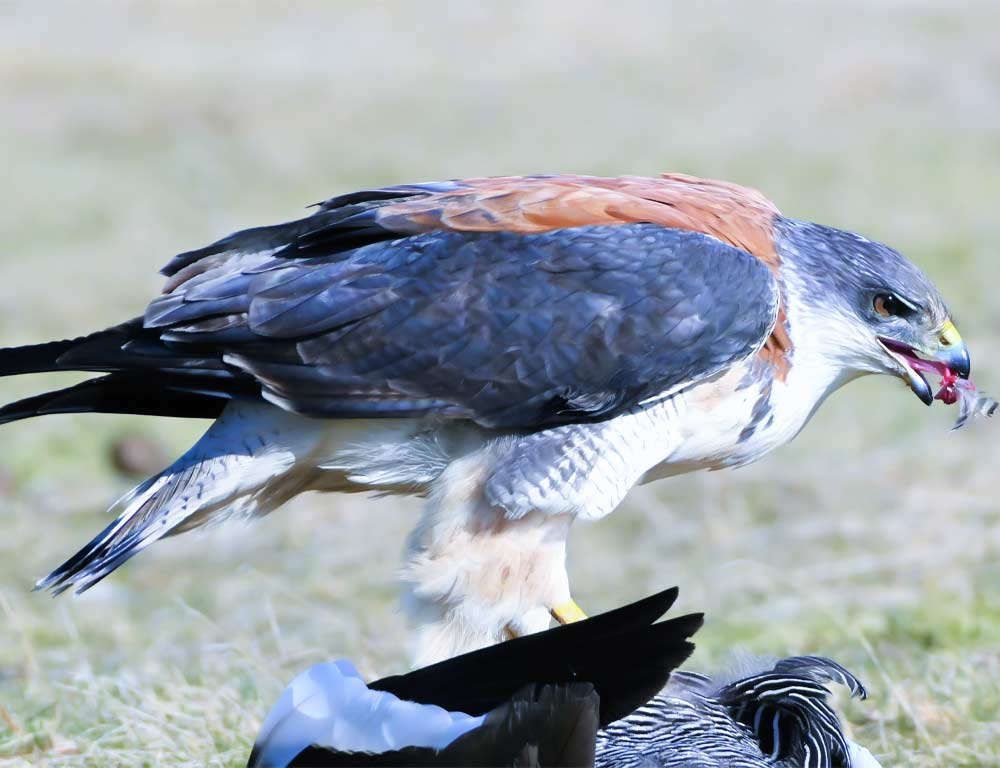
- Scientific name: Buteo jamaicensis
- Size: 18-26 inches
- Weight: 2.5-4.5 pounds
- Food: Carnivorous (small mammals, birds, reptiles)
- Population: Common and widespread
- Life span: 10-25 years
- Wingspan: 3.3-4.8 feet
The Variable Hawk, often called the Red-tailed Hawk, is a versatile and adaptable species found in many habitats, from open fields to forests.
They build stick nests on ledges, trees, or other elevated structures. These hawks are known for their distinctive red tails and keen eyesight.
Variable Hawks are skilled hunters using strategies like soaring or perching to locate and catch prey. Their ability to thrive in diverse environments contributes to their widespread population.
9. Northern Harrier
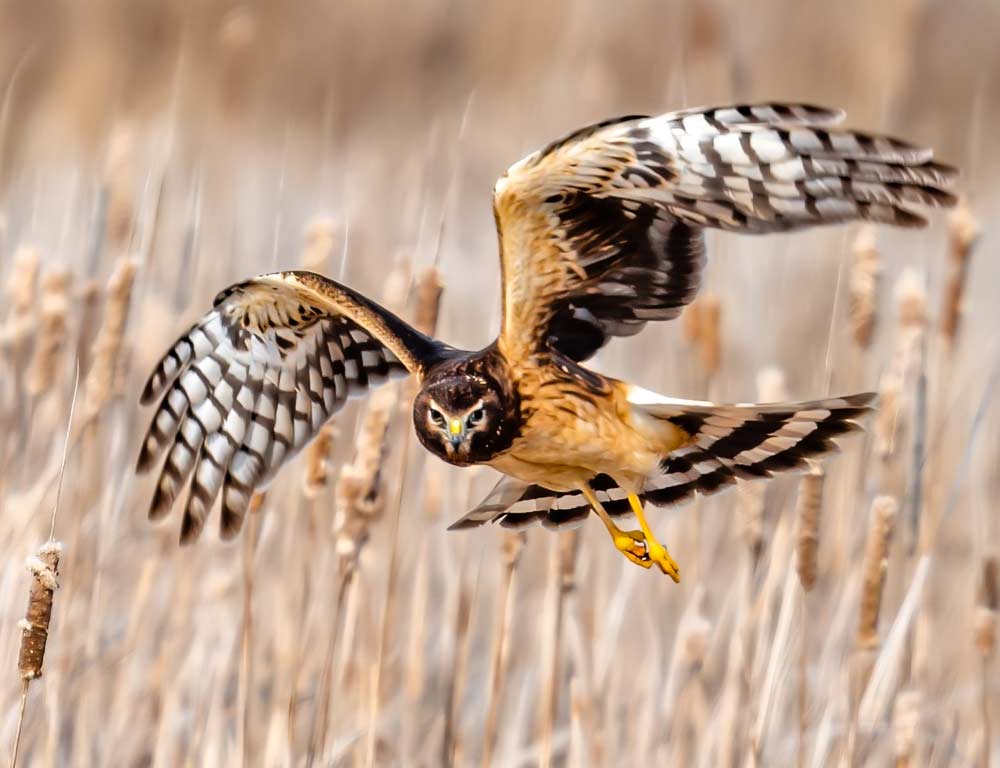
- Scientific name: Circus hudsonius
- Size: 18-24 inches
- Weight: 10-26 ounces
- Food: Small mammals, birds, reptiles
- Population: Generally stable
- Life span: 4-8 years
- Wingspan: 40-48 inches
The Northern Harrier is a distinctive hawk with a face resembling an owl. Found in open habitats like marshes and grasslands, they build nests on the ground.
Northern Harriers are known for their unique hunting behavior of gliding low over the ground, using their keen sense of hearing to locate prey. They primarily feed on small mammals, birds, and occasionally reptiles.
Their populations are generally stable, but conservation efforts focus on preserving suitable habitats and preventing habitat loss due to development or agriculture.
10. Common Black Hawk
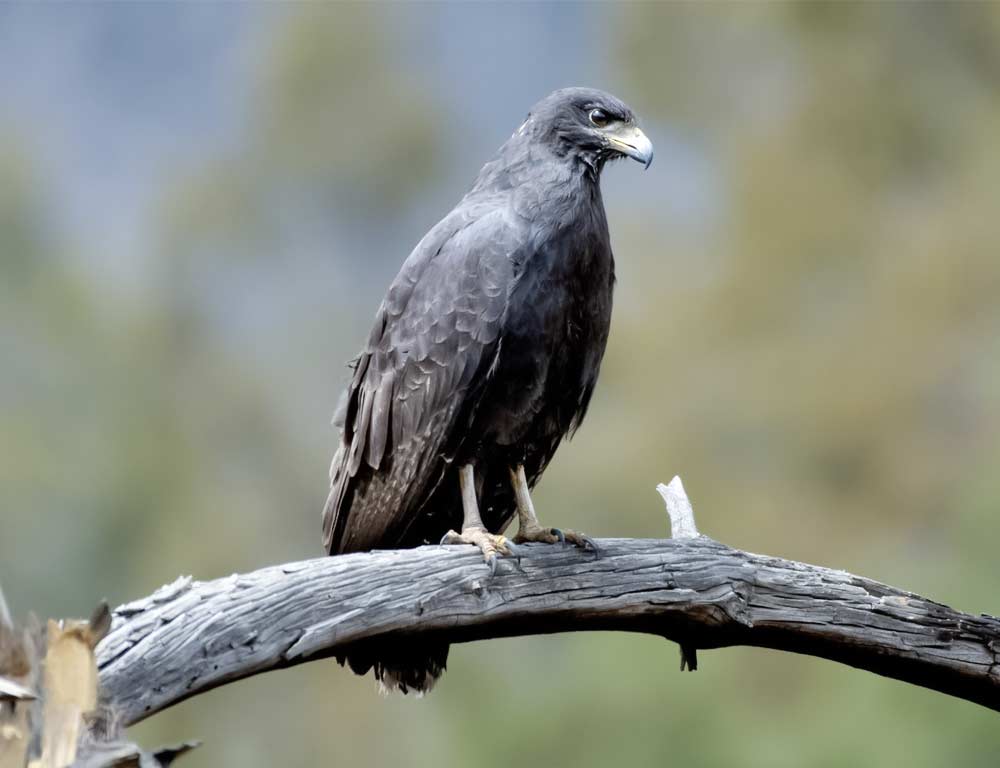
- Scientific name: Buteogallus anthracinus
- Size: 18-22 inches
- Weight: 1.3-1.7 pounds
- Food: Fish, crustaceans, small mammals
- Population: Localized, particularly in riparian habitats
- Life span: Up to 15 years
- Wingspan: 37-40 inches
The Common Black Hawk is primarily found in riparian habitats, including riverine areas and wetlands. They build stick nests in trees near water sources.
These hawks have a diet focused on aquatic prey, such as fish and crustaceans, making them well-adapted to their habitat.
The population of Common Black Hawks can be localized, and they are particularly sensitive to habitat degradation.
Conservation efforts often involve protecting and restoring riparian zones to preserve their nesting sites and food sources.
11. Osprey
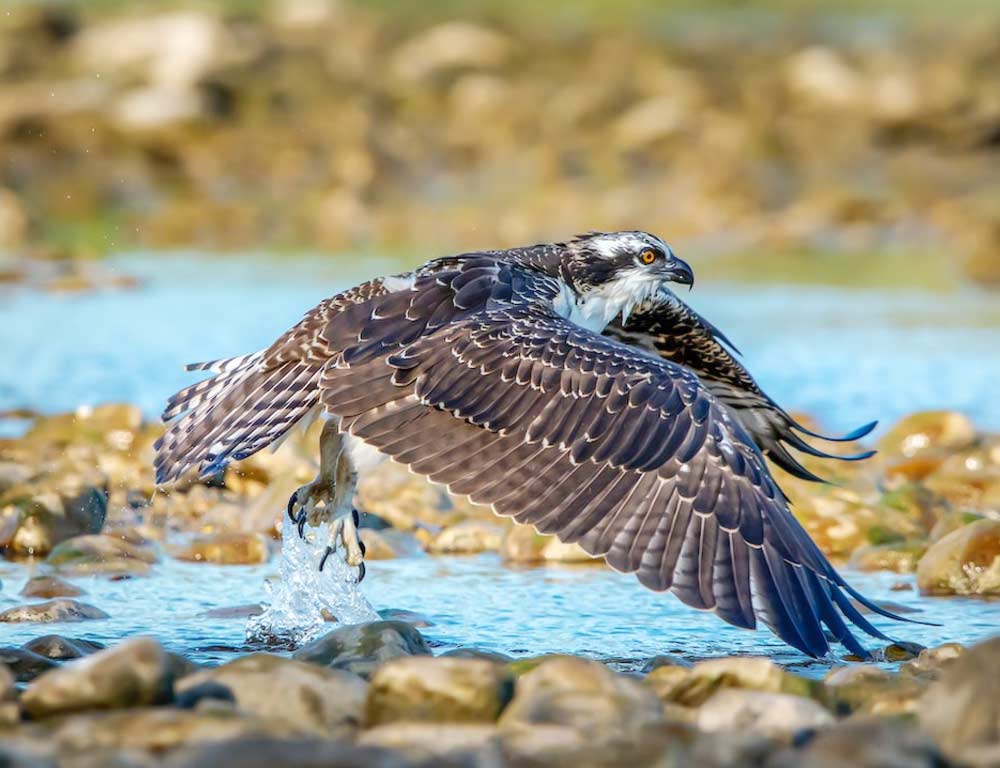
- Scientific name: Pandion haliaetus
- Size: 21-24 inches
- Weight: 2.5-4.5 pounds
- Food: Fish
- Population: Widespread, found near water bodies
- Life span: 7-10 years (average)
- Wingspan: 54-72 inches
Ospreys are distinct raptors with a specialized diet of fish. They are commonly found near freshwater habitats, building large stick nests on platforms, including human-made structures like utility poles and platforms.
Ospreys are expert fishermen who use their sharp talons to catch fish from the water’s surface.
Their widespread distribution is often associated with the availability of suitable nesting sites and abundant fish populations.
Conservation efforts for Ospreys often involve providing and maintaining artificial nesting structures and protecting water quality.
12. Harris’s Hawk
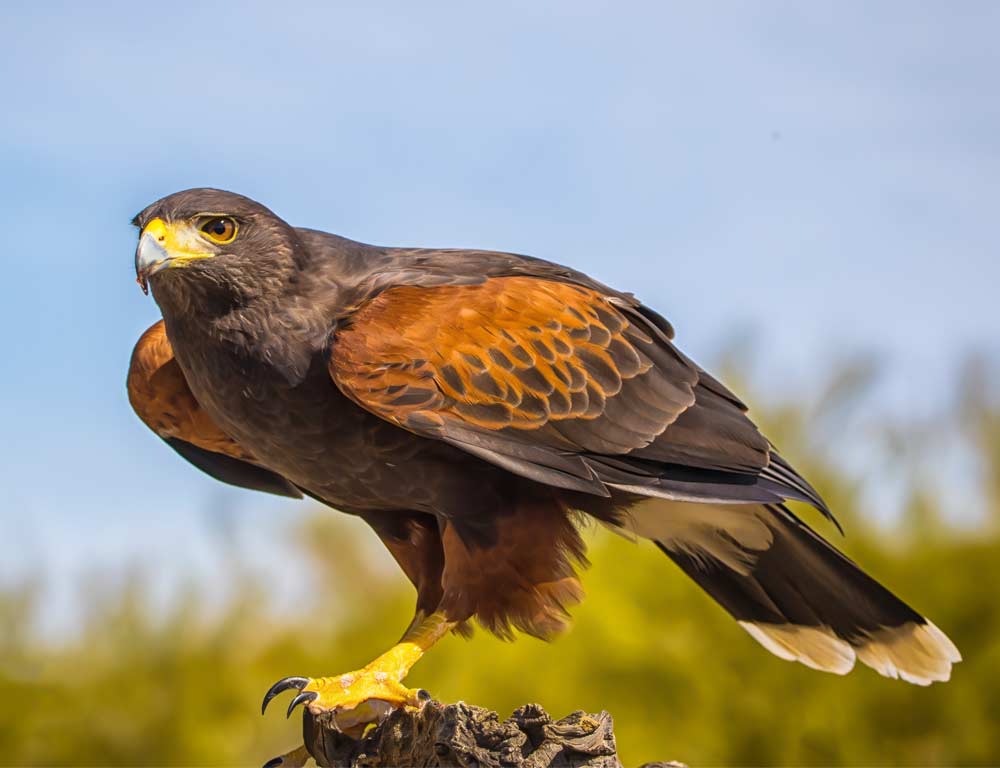
- Scientific name: Parabuteo unicinctus
- Size: 18-24 inches
- Weight: 1.5-3 pounds
- Food: Birds, mammals, reptiles
- Population: Common in the southwestern United States
- Life span: 12-18 years
- Wingspan: 3.3-4.4 feet
Harris’s Hawks are social birds found in the southwestern United States, including parts of Colorado. They build stick nests in trees and cacti. Unique among raptors, Harris’s Hawks hunt cooperatively in family groups.
They have a diverse diet, including birds, mammals, and reptiles. Their adaptability and cooperative hunting strategies contribute to their common presence in their range.
Conservation efforts for Harris’s Hawks often involve protecting their habitats and ensuring that they have access to suitable nesting sites.
Wrapping Up
The avian tapestry of Colorado is woven with the majestic presence of diverse hawks. From the Red-tailed Hawk’s aerial prowess to Harris’s Hawk’s cooperative hunting, these raptors contribute to the ecological richness of the state.
Their nesting behaviors, diets, and adaptations showcase the intricate balance between these predators and their habitats.
As stewards of the skies, understanding and conserving the habitats crucial to their survival is paramount.
These hawks captivate with their aerial displays and play essential roles in maintaining the ecological equilibrium of Colorado’s diverse landscapes. Thank you so much.